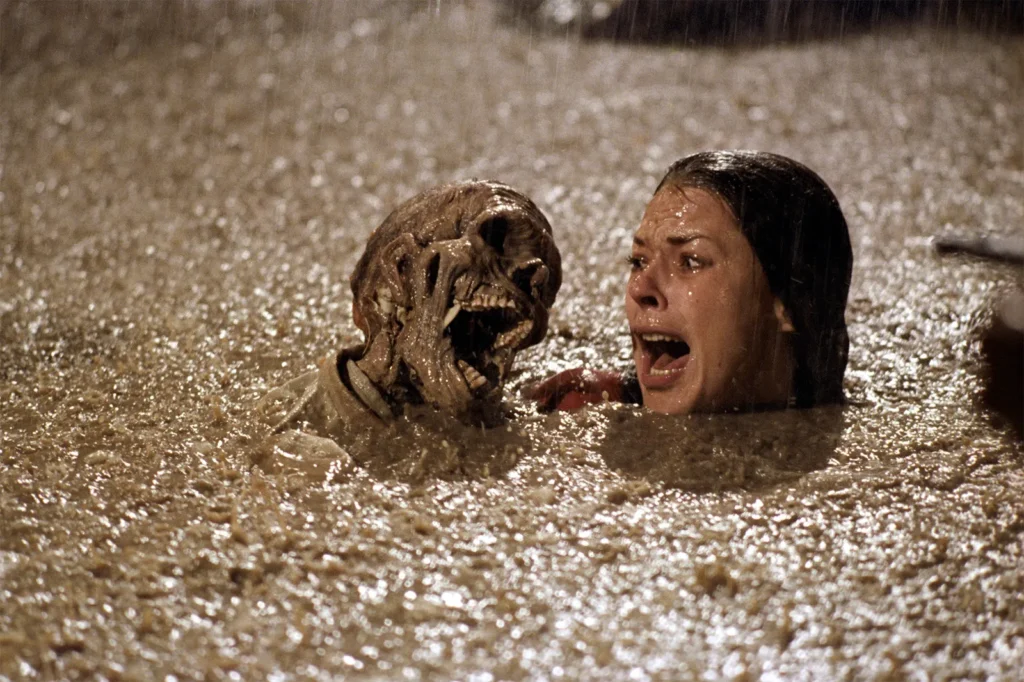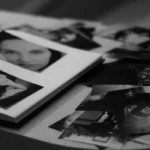Table of Contents
Introduction
The 1982 film Ghost is a foundation of repulsiveness film, prestigious for its grasping story and noteworthy embellishments. Nonetheless, past its true to life accomplishments, the film is encompassed in debate and interest because of the disclosure that genuine human skeletons were utilized during its creation. This chilling point of interest has intensified the film’s frightful standing as well as started moral discussions and powered gossipy tidbits about a supposed “Ghost revile.” The 1982 Movie Poltergeist Used Real Skeletons As – Tymoff.
Coordinated by Tobe Hooper and delivered by Steven Spielberg, Apparition follows the frightening encounters of the Freeling family as they are tortured by powerful powers in their rural home. The film’s reasonable depiction of spooky spirits and tormenting arrangements was essentially upgraded by the utilization of genuine human remaining parts, especially in the notorious pool scene where entertainer JoBeth Williams is encircled by skeletons. Embellishments craftsman Craig Reardon affirmed that these skeletons were genuine, obtained because of their expense viability and the realness they brought to the film’s unpleasant visuals (Looper) .
The choice to utilize genuine skeletons brings up significant moral issues about the treatment of human remaining parts in media outlets. It likewise adds a layer of genuine loathsomeness to the film’s inheritance, with many crediting a progression of shocking occasions and mishaps including the cast and group to a heavenly revile connected to the unsettling influence of these remaining parts .
As we dig into the in the background stories and the film’s getting through influence, we investigate what Ghost has meant for the frightfulness type and started continuous conversations about the harmony between creative desire and moral obligation. This article gives an exhaustive assessment of the variables that add to the film’s enduring heritage, mixing true to life history with social interest.
The Use of Real Skeletons in Poltergeist: Fact or Fiction?
The 1982 film Ghost isn’t just renowned for its frightening storyline yet additionally for the agitating truth that genuine human skeletons were utilized during its creation. This disclosure has ignited interest and contention throughout the long term, adding a layer of genuine loathsomeness to the film’s inheritance.“The 1982 Movie Poltergeist Used Real Skeletons As – Tymoff”
In the film, the Freeling family is spooky by malignant spirits in their rural home, prompting a few startling scenes. Among these, the pool scene is especially infamous. During this scene, entertainer JoBeth Williams, playing Diane Freeling, experiences a few skeletons as she attempts to get away from the sloppy pit. It was subsequently uncovered that these skeletons were not simple props but rather genuine human remaining parts. This choice was affirmed by enhancements craftsman Craig Reardon, who made sense of that genuine skeletons were gained in light of the fact that they were more savvy and given a more serious level of authenticity than plastic copies.
The choice to utilize genuine skeletons was basically determined by financial plan requirements and a longing for realness. In the mid 1980s, getting genuine human remaining parts was shockingly less expensive and more functional than making practical engineered skeletons. These skeletons, frequently obtained from clinical providers, were normally utilized for instructive motivations in study halls, known as “natural careful skeletons.” This training, while at the same time stunning today, was not altogether phenomenal in the entertainment world at that point.
Reasons Behind Using Real Skeletons
“The 1982 Movie Poltergeist Used Real Skeletons As – Tymoff” The choice to involve genuine skeletons in Ghost originates from a mix of down to earth and financial reasons. In the mid 1980s, the entertainment world frequently confronted financial plan imperatives that necessary savvy fixes for embellishments. For Apparition, the decision to utilize genuine human remaining parts was basically determined by cost-viability and the requirement for realness.
Budget Constraints and Practicality
During the creation of Phantom, producers were working inside a strict spending plan. At that point, obtaining genuine human skeletons was more efficient than assembling sensible plastic copies. Embellishments craftsman Craig Reardon uncovered that the skeletons utilized were obtained from India, where they were ordinarily accessible for clinical and instructive purposes. These “organic careful skeletons” were less expensive as well as given a more significant level of authenticity, which was urgent for the film’s extreme and tormenting scenes . “The 1982 Movie Poltergeist Used Real Skeletons As – Tymoff”
Desire for Authenticity in Horror Filmmaking
One more key justification for utilizing genuine skeletons was the movie producers’ obligation to validness. With sickening dread film, accomplishing a feeling of authenticity is fundamental to making a genuinely unnerving encounter for the crowd. By integrating genuine human remaining parts, the producers of Apparition meant to improve the visual effect of the eerie scenes, making them seriously persuading and agitating. This commitment to genuineness is apparent in the film’s reasonable impacts, which depended vigorously on in-camera slyness, cosmetics, and props as opposed to CGI, which was not as cutting edge at that point.
The choice to utilize genuine skeletons likewise features a more extensive pattern in the repulsiveness kind during the 1980s, where producers frequently looked to push the limits of authenticity and shock esteem. This quest for genuineness, be that as it may, accompanied critical moral ramifications, which we will investigate in the accompanying segment.“The 1982 Movie Poltergeist Used Real Skeletons As – Tymoff”
Ethical Implications and Industry Impact
“The 1982 Movie Poltergeist Used Real Skeletons As – Tymoff” The utilization of genuine skeletons in Phantom not just added a chilling layer to the film’s authenticity yet in addition started huge moral discussions with respect to the treatment of human remaining parts in diversion. This training brings up a few issues about regard, respect, and the ethical obligations of movie producers.
Morality in Filmmaking
The choice to involve genuine human remaining parts in Phantom features a basic moral difficulty: the treatment of human remaining parts with deference and respect. Pundits contend that utilizing genuine skeletons for film authenticity shows a dismissal for the departed. This training is viewed as an infringement of moral standards, especially the regard owed to people who gave their bodies for instructive and clinical inspirations, not diversion.
Moreover, the absence of straightforwardness in regards to the beginning and obtainment of these skeletons adds one more layer of moral concern. There is restricted data on whether the groups of the departed knew or had agreed to their remaining parts being utilized in a blood and gore movie. This absence of assent and straightforwardness highlights the moral issues encompassing the utilization of genuine human remaining parts in media.
Changes in Industry Practices Post-Poltergeist
The discussion encompassing Apparition has prompted huge changes in industry works on concerning the utilization of human remaining parts. Today, there is a more noteworthy accentuation on moral rules and guidelines to guarantee that the poise of the departed is protected. Current filmmaking frequently depends on cutting edge enhancements innovation to make practical props without falling back on the utilization of genuine human remaining parts. This shift mirrors a developing mindfulness and obligation to moral principles in media outlets .“The 1982 Movie Poltergeist Used Real Skeletons As – Tymoff”
In addition, the Phantom discussion has provoked movie producers and makers to consider the mental effect on entertainers and team individuals who work with such props. Guaranteeing that all members are completely educated and consenting to the utilization of specific materials has turned into a standard work on, advancing a more deferential and moral way to deal with filmmaking.
The moral ramifications of involving genuine skeletons in Phantom keep on reverberating inside the entertainment world, filling in as a sign of the significance of maintaining moral guidelines and regarding human pride, even chasing imaginative validness.
The Alleged Poltergeist Curse : “The 1982 Movie Poltergeist Used Real Skeletons As – Tymoff”
“The 1982 Movie Poltergeist Used Real Skeletons As – Tymoff” The Phantom film series has for some time been covered in gossipy tidbits about a revile, trusted by some to be connected to the utilization of genuine skeletons during creation. This supposed revile is frequently refered to make sense of the series of appalling occasions and creepy events that occured for the cast and team, both during and after the recording of the films.
Tragic Events Linked to the Cast and Crew
A few vital individuals from the Ghost cast experienced inauspicious and terrible passings, which have energized hypothesis about a revile. One of the most prominent misfortunes was the homicide of Dominique Dunne, who played the oldest Freeling little girl, Dana. She was choked by her ex soon after the arrival of the primary film and kicked the bucket at 22 years old . “The 1982 Movie Poltergeist Used Real Skeletons As – Tymoff”
Another disastrous misfortune was that of Heather O’Rourke, who played the youthful Tune Anne. O’Rourke kicked the bucket at 12 years old due to a misdiagnosed digestive issue. Her unexpected demise happened only months before the arrival of Apparition III, adding to the series’ frightful inheritance .
Notwithstanding these misfortunes, entertainer Julian Beck, who played the malicious soul Kane in Apparition II, passed on from stomach malignant growth not long after recording his job. Will Sampson, who depicted the Local American shaman Taylor in a similar film, likewise passed on from confusions from a heart-lung relocate not long after the film’s delivery .
Superstition vs. Coincidence
The series of sad occasions encompassing the Ghost films has persuaded numerous to think in an otherworldly revile. Allies of this hypothesis highlight the utilization of genuine skeletons as a potential wellspring of the revile, proposing that upsetting these remaining parts might have brought misfortune or vindictive powers upon those engaged with the movies . “The 1982 Movie Poltergeist Used Real Skeletons As – Tymoff”
Nonetheless, doubters contend that these occasions, while shocking, are incidental and not characteristic of a revile. They call attention to that media outlets is huge, and awful occasions can happen to anybody, no matter what their association in unambiguous ventures. Besides, the thought of a revile might be intensified by the movies’ subjects of powerful repulsiveness, making the genuine misfortunes appear to be more associated with the storyline than they really are .
In spite of the absence of substantial proof supporting the presence of a revile, the legend of the Phantom revile stays a convincing and shocking piece of the film’s heritage, proceeding to interest fans and repulsiveness lovers the same.
Behind-the-Scenes Stories and Legends
“The 1982 Movie Poltergeist Used Real Skeletons As – Tymoff” The development of Ghost is loaded up with shocking accounts and disrupting events that have added to its unbelievable status with sickening apprehension film. These in the background stories upgrade the film’s persona and have become basic to its heritage.
The Infamous Pool Scene
Perhaps of the most discussed scene in Phantom is the scandalous pool scene, where Diane Freeling, played by JoBeth Williams, is encircled by skeletons as she battles in a sloppy pit. This scene is especially eminent in light of the fact that it was subsequently uncovered that the skeletons were genuine human remaining parts. Williams herself has related how she knew nothing about this reality during the recording and just found out subsequently. The utilization of genuine skeletons added a layer of legitimacy to the scene yet additionally added to the disrupting environment on set .
Other On-Set Incidents
“The 1982 Movie Poltergeist Used Real Skeletons As – Tymoff” The development of Phantom was set apart by a progression of odd and upsetting episodes that have since become piece of the film’s legend. One such occurrence included the breaking down of an animatronic comedian doll, which should stifle the person Robbie, played by Oliver Robins. During recording, the doll’s mechanical arm fixed around Robins’ neck, making him stifle. At first, the group thought his battles were important for his acting until they understood he was in genuine pain and immediately mediated .
One more unconventional occasion happened on the principal day of shooting, when the film returned totally clear, leaving the accomplished group perplexed. Furthermore, James Kahn, the creator of the film’s novelization, encountered a strange mishap when lightning struck his trailer, causing a cooling unit to detonate and harm him .
The Exorcism on Set
“The 1982 Movie Poltergeist Used Real Skeletons As – Tymoff” Adding to the film’s heavenly quality, reports of an expulsion are being performed on the arrangement of Ghost II: The Opposite Side. Entertainer Will Sampson, who played the shaman Taylor, directed the expulsion to free the arrangement of any waiting insidious spirits. This custom was supposedly provoked by the inescapable disquiet felt by the cast and team, who accepted that the utilization of genuine skeletons could have welcomed malignant powers .
These accounts and legends encompassing the creation of Ghost have established its standing as quite possibly of the most spooky and baffling film in Hollywood history. The blend of genuine misfortunes and unusual events has obscured the lines among fiction and reality, making the in the background story nearly as convincing as the actual film.
Legacy of Poltergeist in Horror Cinema
“The 1982 Movie Poltergeist Used Real Skeletons As – Tymoff” The tradition of Ghost reaches out a long ways past its underlying delivery, affecting the loathsomeness type and leaving an enduring effect on the two producers and crowds. This film is frequently commended for its inventive utilization of viable impacts and its capacity to mix extraordinary repulsiveness with a convincing family show.
Influence on Future Horror Films
“The 1982 Movie Poltergeist Used Real Skeletons As – Tymoff” Ghost set another norm for blood and gore movies with its notable utilization of functional impacts. Before the boundless reception of CGI, producers depended vigorously on in-camera impacts, cosmetics, and actual props to make a feeling of authenticity. Phantom displayed these procedures marvelously, especially in scenes including spooky spirits and the renowned second when furniture is mysteriously stacked and moved by concealed powers .
The film’s capacity to summon dread through a mix of dramatic narrating and special visualizations has roused innumerable blood and gore flicks that followed. Its prosperity exhibited that blood and gore movies could accomplish standard allure without forfeiting the components that make the class convincing. This mix of business achievement and creative development has made Phantom a diagram for some cutting edge thrillers .
Continuing Fascination with the Poltergeist Mythos
“The 1982 Movie Poltergeist Used Real Skeletons As – Tymoff” The narratives and legends encompassing the creation of Ghost have become nearly as renowned as the actual film, adding to its getting through ubiquity. The idea of a “Phantom revile” has fascinated fans and ghastliness lovers, prompting various narratives, articles, and conversations investigating the secretive occasions connected to the film. This continuous interest has kept Phantom important in mainstream society, as new ages of watchers find the film and its shocking history .
Also, the film’s paramount slogan, “They’re here,” conveyed by youthful Hymn Anne, has become notorious, frequently cited and referred to in different media. This line typifies the film’s mix of blamelessness and fear, catching the quintessence of the otherworldly danger looked by the Freeling family.
Technological Advancements and Ethical Standards
“The 1982 Movie Poltergeist Used Real Skeletons As – Tymoff” In the a long time since Ghost was delivered, the entertainment world has seen critical headways in embellishments innovation. Current blood and gore movies presently approach refined CGI and computerized impacts, permitting producers to cause practical and unnerving situations without the requirement for genuine human remaining parts. This mechanical advancement has likewise been joined by a more prominent accentuation on moral guidelines, guaranteeing that the pride, all things considered, living or expired, is regarded in the filmmaking system .
The tradition of Phantom subsequently fills in as a sign of both the imaginative conceivable outcomes and the moral obligations inborn in the making of loathsomeness film. Its impact keeps on being felt in the class, rousing movie producers to push the limits of narrating while at the same time sticking to better expectations of regard and honesty.
Reflecting on the Legacy of Poltergeist
“The 1982 Movie Poltergeist Used Real Skeletons As – Tymoff” The tradition of Phantom is a mind boggling embroidery of realistic accomplishment, frightful fables, and moral contemplations. As we consider this famous film, obviously its effect reaches out past the screen, affecting the awfulness type and starting continuous conversations about the crossing point of workmanship and ethical quality.
Summary of the Film’s Impact
Phantom remaining parts a milestone with sickening apprehension film, praised for its inventive utilization of commonsense impacts and its convincing mix of extraordinary ghastliness with engaging family show. The film’s prosperity exhibited the potential for thrillers to accomplish standard allure, making ready for future movies in the class to investigate comparative subjects and methods .
Ethical Considerations in Filmmaking
The disclosure that genuine skeletons were utilized in Ghost has provoked huge reflection on the moral obligations of producers. This training, while expected to upgrade authenticity, brings up significant issues about the regard and respect owed to human remaining parts. Present day headways in embellishments innovation currently give options that permit movie producers to make sensible and vivid encounters without compromising moral principles .
Enduring Fascination and Cultural Impact
The continuous interest with the Ghost mythos, especially the supposed revile, keeps on dazzling crowds and repulsiveness devotees. This mix of genuine misfortune and extraordinary narrating has established Phantom as a film with an enduring inheritance, both as a piece of diversion and as a subject of social interest. The tales and legends encompassing the film act as a wake up call of the force of film to obscure the lines among fiction and reality, making a story that reaches out past the bounds of the screen .
Lessons for Future Filmmakers
As we plan ahead for ghastliness filmmaking, the tradition of Phantom offers important illustrations in offsetting creative desire with moral obligation. Producers are urged to push the limits of narrating and enhancements while sticking to rules that regard the nobility of all people engaged with the creation cycle, including those whose remains might be considered for use as props .
Conclusion
“The 1982 Movie Poltergeist Used Real Skeletons As – Tymoff” Ghost stays a huge film throughout the entire existence of loathsomeness film, for its creative accomplishments as well as for the moral inquiries it raises. Its heritage is a demonstration of the getting through force of narrating and the significance of keeping up with moral norms in the production of craftsmanship. As we return to the chilling story of the Freeling family, we are helped to remember the fragile harmony among creativity and morals that characterizes the universe of film.
Read More : KASE ABUSHARKH AMY BERRY







